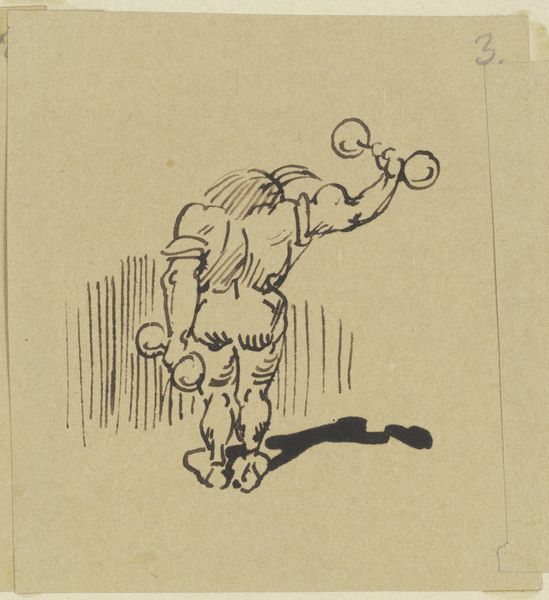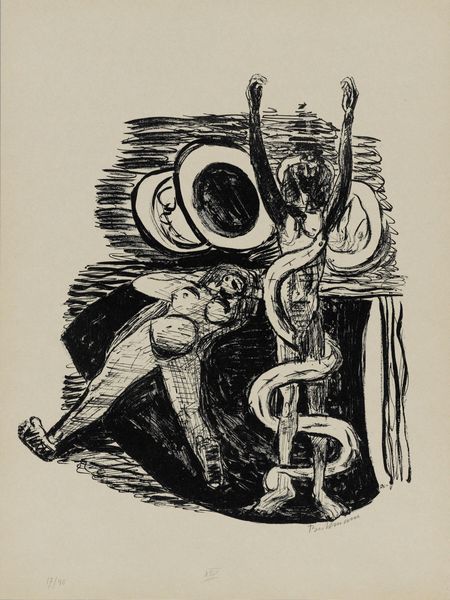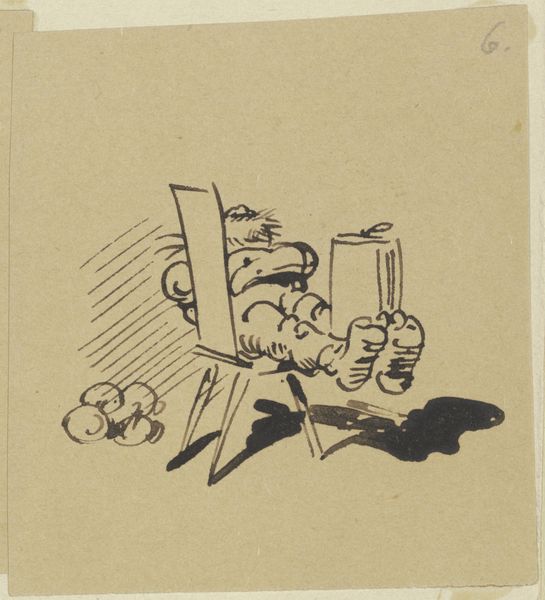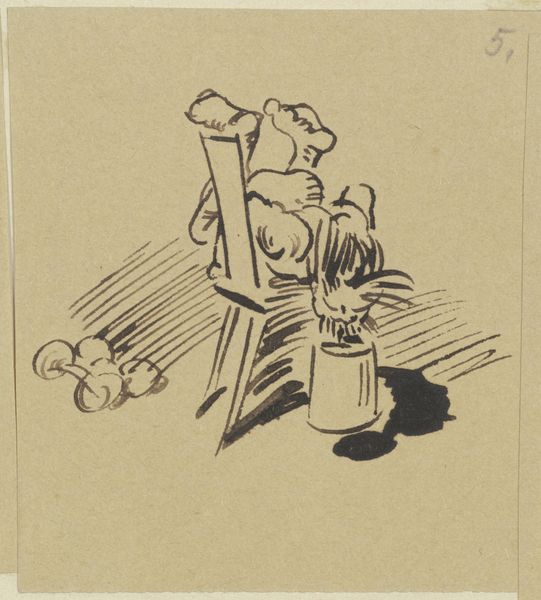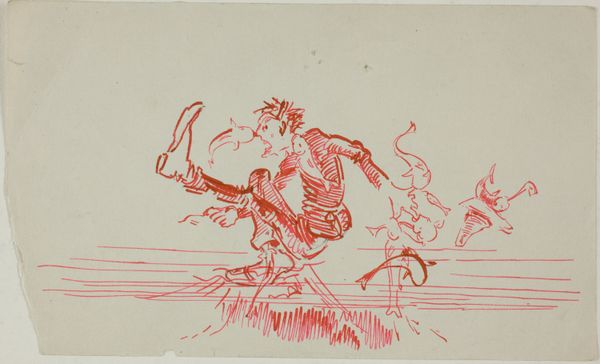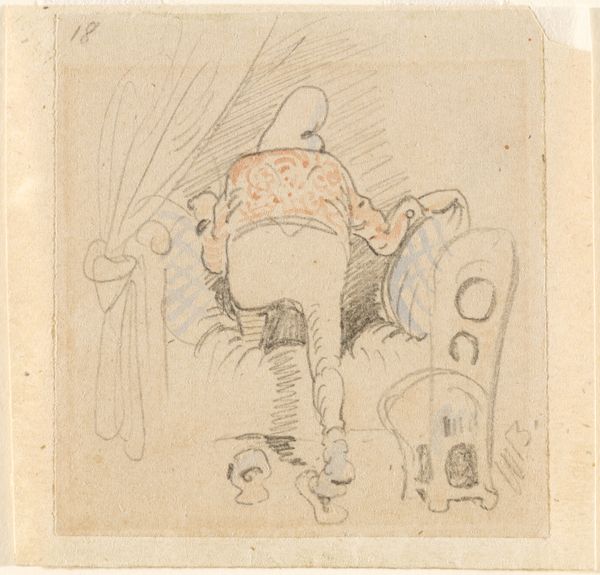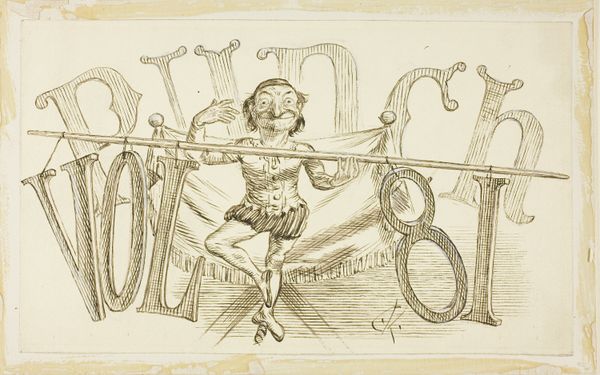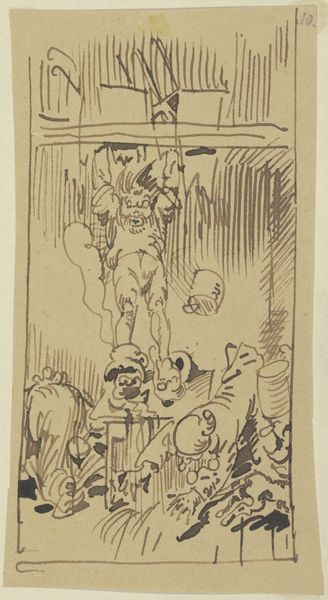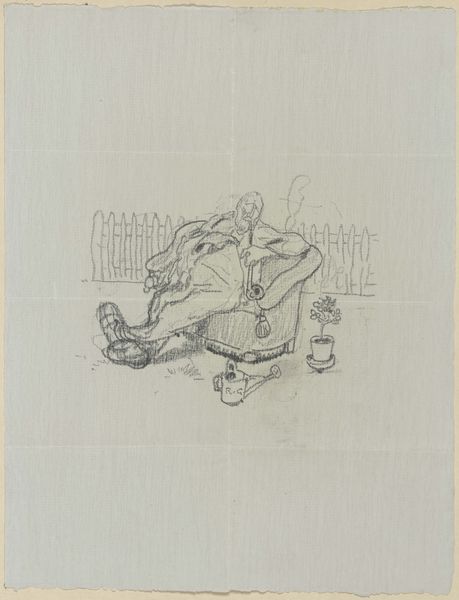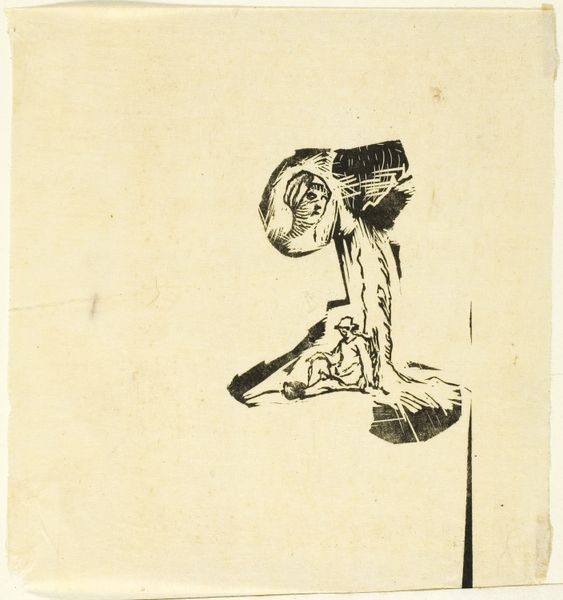
Einseitig aber ist der Mann, _ Der's nicht mit beiden Händen kann 1871
0:00
0:00
drawing, ink, indian-ink, pen
#
drawing
#
imaginative character sketch
#
blue ink drawing
#
16_19th-century
#
quirky sketch
#
cartoon sketch
#
figuration
#
personal sketchbook
#
ink
#
german
#
sketchwork
#
ink drawing experimentation
#
indian-ink
#
sketchbook drawing
#
pen
#
storyboard and sketchbook work
#
sketchbook art
Copyright: Public Domain
Curator: Here we have Wilhelm Busch’s pen and ink drawing, created around 1871, entitled "Einseitig aber ist der Mann, Der's nicht mit beiden Händen kann"—"One-sided indeed is the man who can’t do things with both hands.” Editor: My initial reaction is surprise at the bold lines and seemingly effortless depiction of weightlifting, but it strikes me as more comedic than heroic, almost mocking the display of exaggerated musculature. Curator: The inscription tells us much. It's not *really* about weightlifting but about capacity—specifically, someone who can only manage with one hand. It critiques narrow-mindedness and suggests a certain… ineffectuality. Editor: Precisely. And the very rough handling of the ink gives a casual feel, right? Like a doodle in a sketchbook rather than a finished artwork intended for a public audience. The blobby dark shading isn't about form but a rapid-fire way of indicating volume and weight. It seems Busch focused on making sure the weight being lifted looks comically cumbersome and slightly off balance. Curator: Indeed. And considering Busch's context, renowned for his satirical cartoons like Max and Moritz, this image reflects the 19th-century's growing awareness of societal restrictions and expectations, delivered via the language of accessible humour. This piece shows the limitations someone might face or even inflict upon themselves by lacking flexibility or broader capabilities. Editor: Right. The focus here on material and the physicality of labor highlights a core aspect of what it meant to work and, I'd suggest, critique the then-emerging cult of physical perfection. Curator: It does add another dimension, suggesting critique. Busch’s quick rendering reflects the fast pace of modern life, contrasted against the timeless ideal of physical and mental strength—with the joke of failing. Editor: Agreed. Busch transforms mundane materials, pen and ink, into an active commentary about physical culture, labor, and societal limitations. Fascinating to consider the role of making within societal frameworks through such simple means. Curator: An incisive observation about craftsmanship reflecting, but also commenting on its era. Thanks for bringing out the nuances. Editor: My pleasure. Always more to excavate beyond the image, and in what makes that image, literally.
Comments
No comments
Be the first to comment and join the conversation on the ultimate creative platform.
